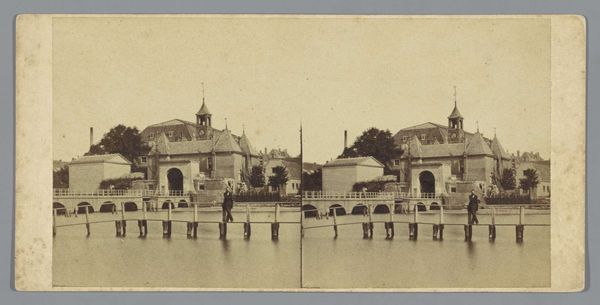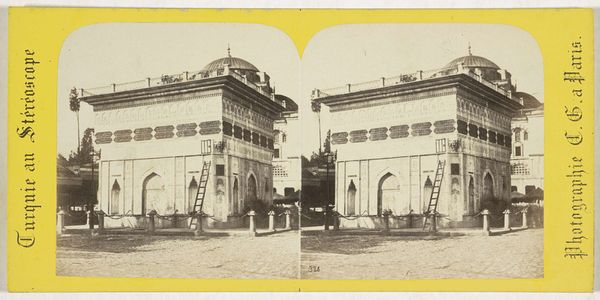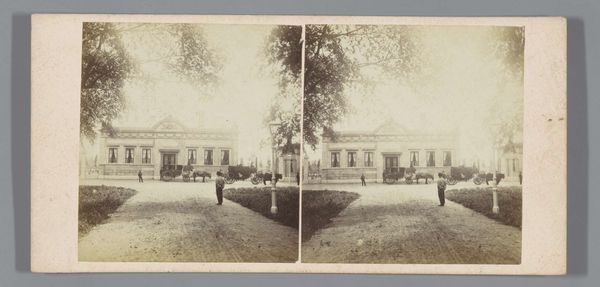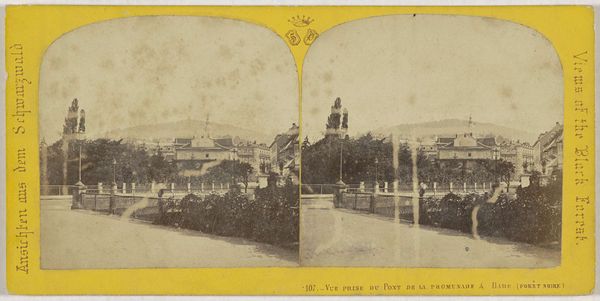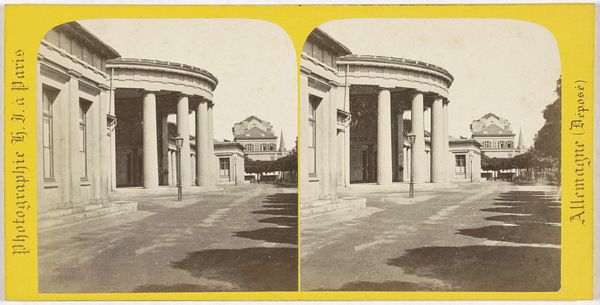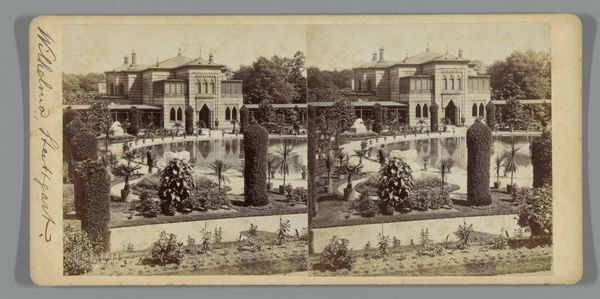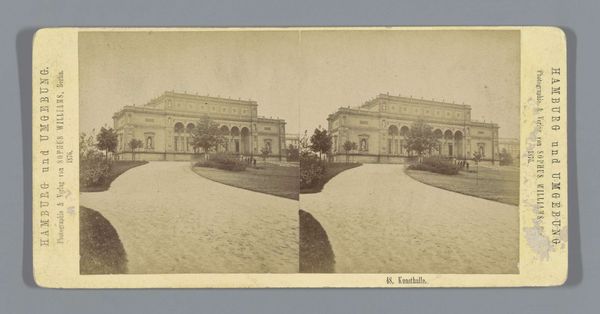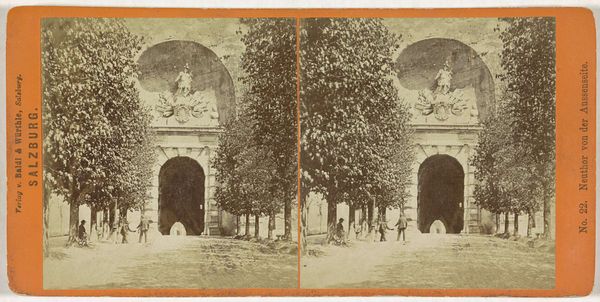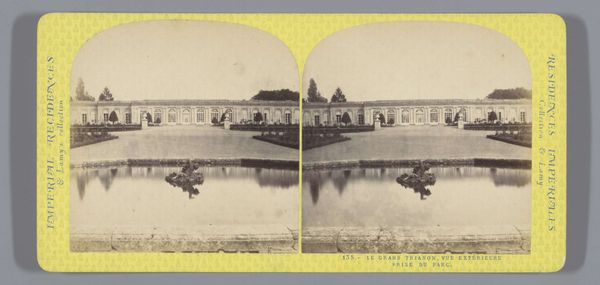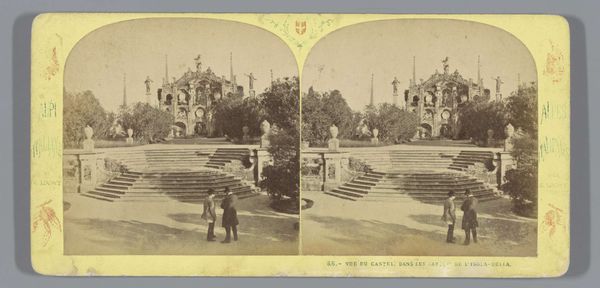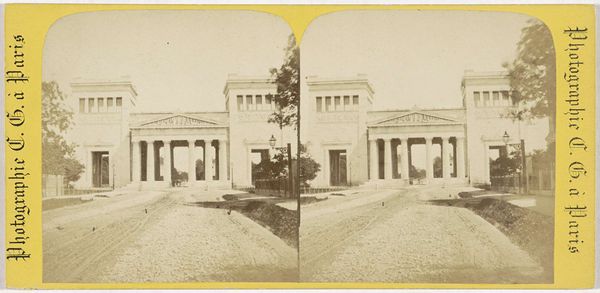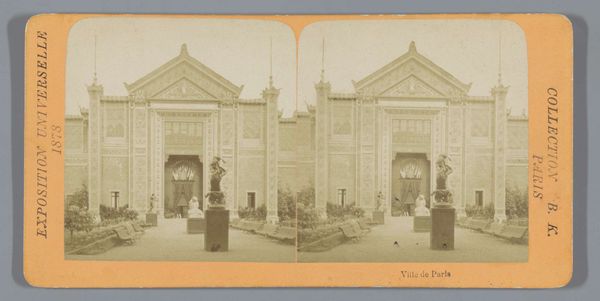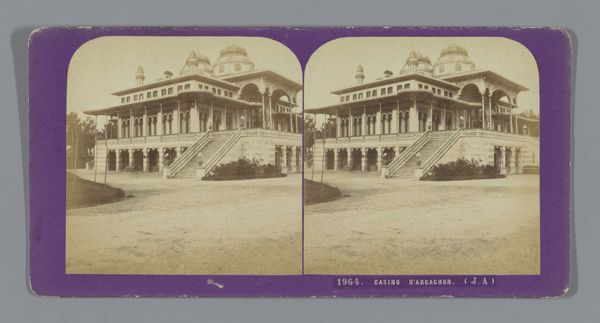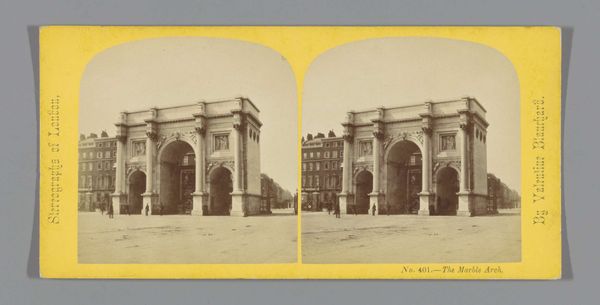
Dimensions: height 86 mm, width 176 mm
Copyright: Rijks Museum: Open Domain
This stereoscopic photograph of the Conversatiehuis in Baden-Baden, Germany, was created by Hippolyte Jouvin using an early photographic process. The stereoscope was a popular form of entertainment in the 19th century, using two nearly identical images to create an illusion of depth when viewed through a special device. The sepia tones and the texture of the photographic paper give the image an antique feel, emphasizing the building's classical architectural elements. The building is a monument to leisure, with its grand colonnade and ornate gazebo. Jouvin’s choice of this subject reflects the rise of tourism and leisure culture in 19th century Europe. Photography democratized image-making, making it accessible to a wider audience than traditional painting or sculpture. The mass production of stereoscopic images was a symptom of broader industrial and economic shifts, suggesting a public with more disposable income and leisure time. By looking closely at the materials and the social context, we can move beyond the surface to appreciate the photograph's full cultural significance.
Comments
No comments
Be the first to comment and join the conversation on the ultimate creative platform.
